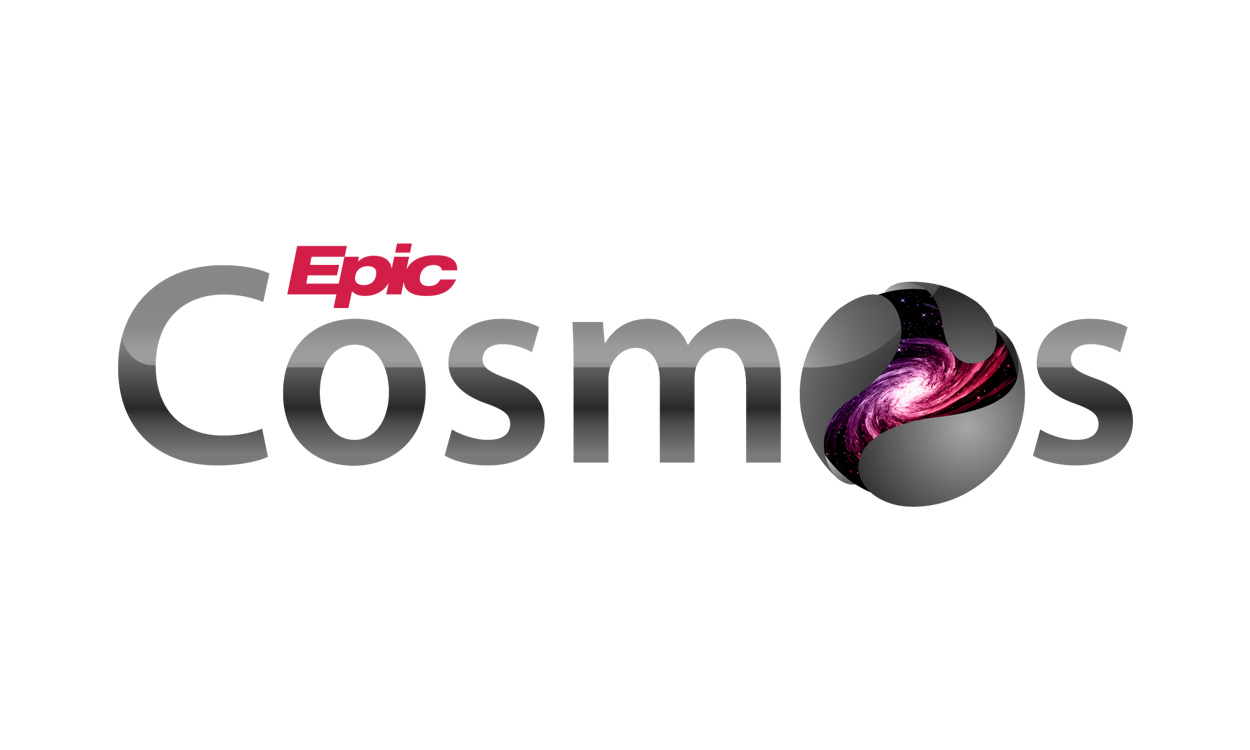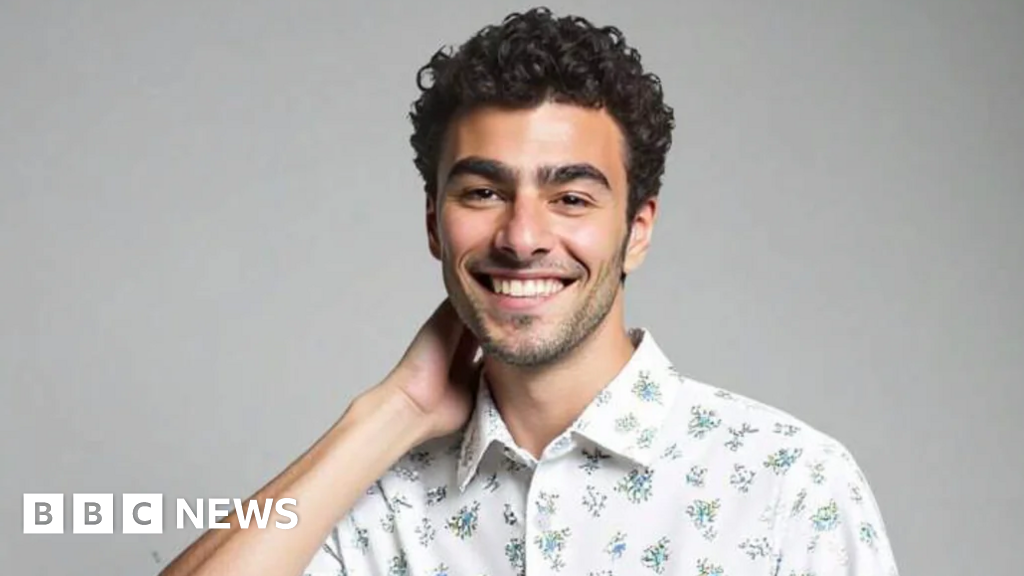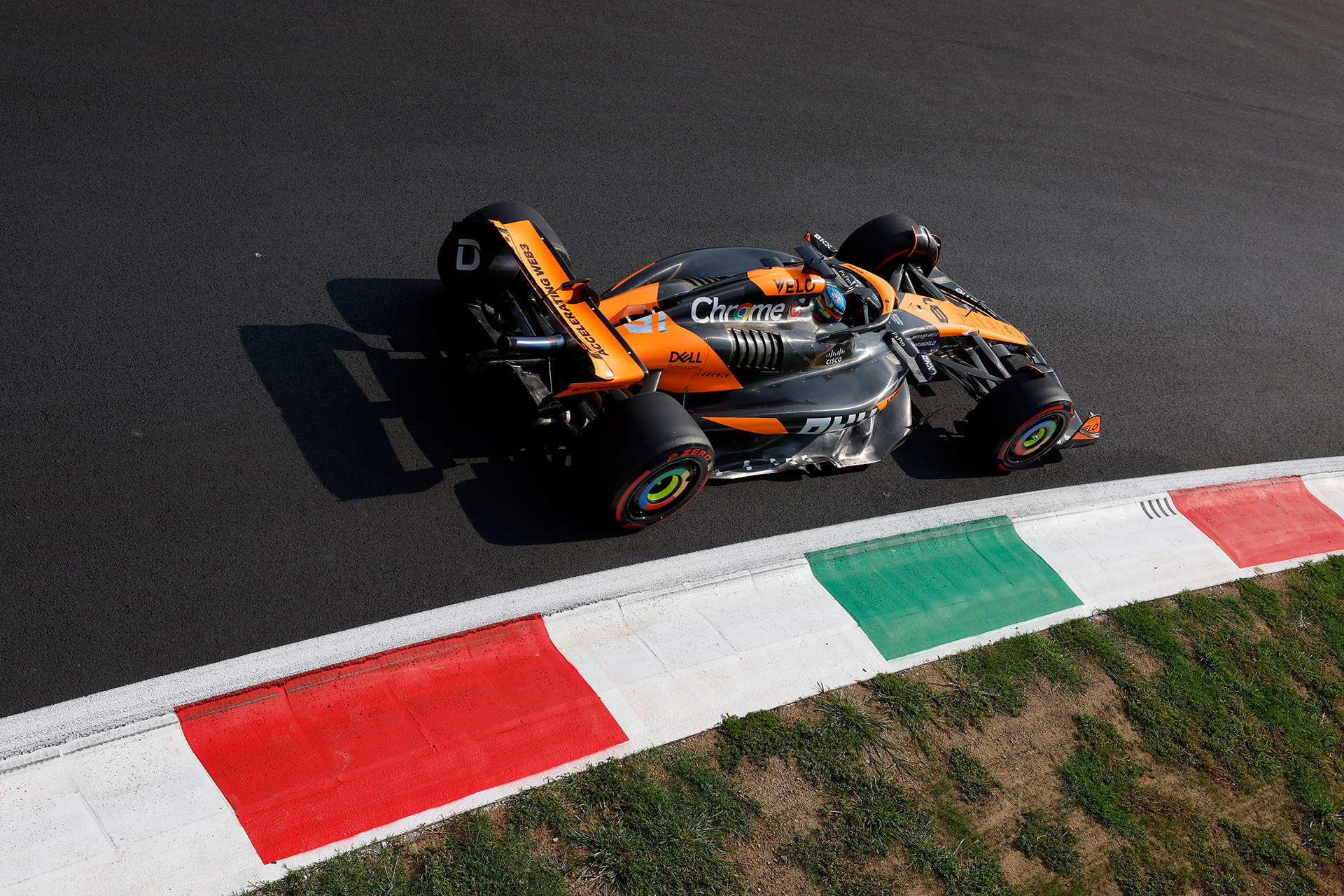Introduction
Urologic diseases represent a major public health concern for women worldwide.1 These include both nonmalignant and malignant conditions such as urinary tract infections (UTIs), urolithiasis, kidney cancer, and bladder cancer, which are highly prevalent and associated with substantial morbidity and disability. Although urologic trauma related to obstetric complications is an important issue in some low-resource settings, data on its burden remain limited.2 Accordingly, this study focuses on four major urologic diseases in women: UTIs, urolithiasis, kidney cancer, and bladder cancer. UTIs affect more than 40% of women during their lifetime, with Escherichia coli being the most common pathogen.3,4 A prior history of urinary tract infections is one of the strongest risk factors for future UTIs.5 Approximately 30% of women experience recurrent infections within six months. Rising antimicrobial resistance has diminished the effectiveness of standard antibiotic treatments, prompting interest in alternative preventive strategies, such as vaginal estrogen and lactobacillus-containing probiotics in postmenopausal women.6 Meanwhile, the burden of urolithiasis has also increased, particularly among women.7 Compared to nulliparous women, pregnant women under 50 years of age face more than double the risk of stone formation.8 Contributing factors include metabolic syndrome, dietary habits, weight loss interventions, hypercalciuria, and environmental and socioeconomic conditions, all of which have been linked to elevated risk of stone recurrence.9–11
Kidney and bladder cancers are two other urologic diseases with rising incidence in women. Kidney cancer is now the ninth most common cancer among women globally, with incidence rates increasing by 2–3% per year between 2015 and 2019.12 Alarmingly, mortality rates for kidney cancer are twice as high in Native American individuals compared to individuals of White descent.13 Risk factors for kidney cancer include smoking, alcohol consumption, overweight or obesity, and hypertension.14 For bladder cancer, smoking remains a major modifiable risk factor, responsible for approximately 50% of cases in men and 40% in women in the United States.1 While the overall incidence and mortality remain higher in men, women who are active or passive smokers still face significant risk.15 Additionally, emerging evidence implicates occupational exposures, specific dietary habits, microbiome dysbiosis, gene–environment interactions, diesel exhaust, and pelvic radiotherapy in bladder cancer development.16 These disparities highlight the complex interplay of biological, behavioral, and social factors in shaping disease burden.
Despite the considerable health impact of these urologic diseases, up-to-date, sex-specific epidemiological data are scarce. Regional and national differences in incidence and outcomes are influenced by healthcare access, sociodemographic development, and environmental exposures.17 To address this gap, we used data from the Global Burden of Disease Study 2021 to systematically evaluate the incidence and disability-adjusted life years (DALYs) of UTIs, urolithiasis, kidney cancer, and bladder cancer in women across 204 countries and territories from 1990 to 2021.18–20 This analysis aims to uncover global patterns and temporal trends of four major urinary conditions in women to support evidence-based public health strategies and inform future research and clinical practice.
Patients and Methods
Data Source and Screening
This study utilized data from the Global Burden of Disease (GBD) Study 2021, which systematically estimates the incidence, mortality, DALYs, and age-standardized rates for 371 diseases and injuries across sexes, age groups, and 204 countries and territories worldwide.18 GBD 2021 employed three core analytical tools—Cause of Death Ensemble Model (CODEm), Spatiotemporal Gaussian Process Regression (ST-GPR), and DisMod-MR 2.1—to synthesize data and generate consistent estimates of disease burden.18,20
For the present analysis, we extracted data specific to four major urologic diseases in women—urinary tract infections, urolithiasis, kidney cancer, and bladder cancer. We extracted global-level data to analyze overarching trends. For more detailed national and subregional comparisons, we selected Western Europe, China, and North Africa and the Middle East as representative regions based on their geographic diversity, data availability, and distinct epidemiological profiles of urologic diseases. “Incidence” and “DALYs” were chosen as the primary measures of disease burden. To provide a comprehensive overview, we examined age- and year-specific incidence and DALY rates for each of the four conditions across the selected regions.
The Socio-demographic Index (SDI), a composite indicator reflecting income per capita, average educational attainment, and fertility rates, was included to account for variations in development level, given its strong association with health outcomes.21 Using GBD 2021 data, countries and territories were categorized into five groups based on SDI: high, high-middle, middle, low-middle, and low. Additionally, the Human Development Index (HDI), a composite measure of overall human development obtained from the United Nations Development Programme, was employed.22 Correlation analyses between GBD data and HDI were conducted to examine the relationship between human development and disease burden.23 Risk factor attribution was based on the GBD’s comparative risk assessment framework, which comprises six key steps to estimate the proportion of disease burden attributable to modifiable risk exposures.24 This framework enabled further insight into the global patterns and drivers of urologic disease burden in women.
Statistical Analysis
The age-standardized rate (ASR), was used to account for differences in age structures between populations and over time. It was calculated using the following formula:
In the equation,  i represents the age-specific rate in the ith age group, and wi denotes the count of individuals in the same age group based on the GBD 2021 standard population.18
i represents the age-specific rate in the ith age group, and wi denotes the count of individuals in the same age group based on the GBD 2021 standard population.18
To evaluate temporal trends in the burden of urologic diseases in women, we calculated the estimated annual percentage change (EAPC) in age-standardized incidence rate (ASIR) and age-standardized DALY rate (ASDR) from 1990 to 2021.25 EAPC was derived from a linear regression model fitted to the natural logarithm of the ASR, specified as:

EAPC was then defined as:

The 95% confidence interval (CI) of the EAPC was also obtained from the regression model.26 We interpreted a trend as statistically significant if both the EAPC and its 95% CI were either entirely above or entirely below zero. If the 95% CI included zero, the trend was considered statistically insignificant.
Finally, to project trends through 2046, we conducted an age–period–cohort (APC) analysis using the “Nordpred” package in R. This approach considers both demographic changes and temporal trends and has been well-established in previous studies.27 All statistical analyses were performed using R software (version 4.3.2), and rates were expressed per 100,000 population. Statistical significance was determined using a p value of <0.05.
Results
Global and Regional Patterns in the Burden of Urologic Diseases in Women
In 2021, the global incidence of urologic diseases in women showed a notable increase. The estimated number of new cases was 35,718.97 × 105 for UTIs (95% UI: 31,808.47–39,914.82), 3,487.81 × 105 for urolithiasis (95% UI: 2,913.36–4,247.25), 13.52 × 105 for kidney cancer (95% UI: 12.41–14.42), and 12.26 × 105 for bladder cancer (95% UI: 10.82–13.39). To better capture temporal trends while accounting for population growth and changes in age distribution, age-standardized rates (ASRs) were utilized. Analysis of the ASIR and ASDR from 1990 to 2021 revealed heterogeneous trends across different diseases.
The ASIR of UTIs remained relatively stable globally with EAPC of 0.03 (95% CI 0.02 to 0.05), whereas its ASDR generally declined with EAPC of −0.6 (95% CI: −0.76 to −0.25), except in China where a slight upward trend was observed. For urolithiasis, both the ASIR and ASDR declined steadily over the study period, with a global ASIR EAPC of −0.16 (95% CI −0.19 to −0.14) and ASDR EAPC of −0.26 (95% CI −0.35 to −0.08). In contrast, the ASIR for kidney cancer remained relatively stable with EAPC of 0.04 (95% CI −0.03 to 0.12), while its ASDR significantly decreased with EAPC −0.23 (95% CI −0.30 to −0.13). For bladder cancer, both ASIR and ASDR showed a favorable and consistent downward trend, with an ASIR EAPC of −0.15 (95% CI −0.22 to −0.07) and ASDR EAPC of −0.31 (95% CI −0.38 to −0.22). These results are detailed in Table 1.
 |
Table 1 Global Incidence and DALYs of Four Female Genitourinary Diseases from 1990 to 2021
|
National and Subregional Trends in the Burden of Urologic Diseases in Women
At the national level, the ASDR for UTIs has declined in most countries or regions worldwide, with China showing the most pronounced decrease (EAPC: –0.60; 95% CI: –0.76 to –0.25). In contrast, several countries in North Africa and South America, such as Argentina, Uruguay, and Kuwait, have experienced a rapid increase in ASDR (Figure 1A). For urolithiasis, the ASDR has increased in several countries, including Libya, Brazil, and Guyana, whereas Czechia recorded the fastest decline (EAPC: –0.73; 95% CI: –0.80 to –0.65) (Figure 1B). Regarding kidney cancer, although the ASDR is generally decreasing, the rate of decline is relatively modest. Sri Lanka leads in the reduction trend with an EAPC of –0.79 (95% CI: –0.87 to –0.67) (Figure 1C). As for bladder cancer, some countries show substantially faster declines in ASDR than others, with Mongolia, Mauritius, and Egypt ranking in the top three (Figure 1D). Overall, China stands out globally for achieving substantial reductions in the ASDR across all four major urologic diseases in women, with an EAPC of –0.60 (95% CI: –0.76 to –0.25) for urinary tract infections, –0.66 (95% CI: –0.76 to –0.40) for urolithiasis, –0.52 (95% CI: –0.67 to –0.32) for kidney cancer, and –0.33 (95% CI: –0.55 to –0.05) for bladder cancer.
 |
Figure 1 Global and regional variations in the EAPC of ASDR for urologic diseases in women. (A) Urinary tract infections. (B) Urolithiasis. (C) Kidney cancer. (D) Bladder cancer.
|
Correlation Among EAPC, ASR, and HDI
In the correlation analysis between the ASR and the EAPC from 1990 to 2021 for urologic diseases in women, a notable negative correlation was observed between the ASDR of UTIs and the corresponding EAPC in 1990 (cor=−0.3184, p<0.0001), while a positive correlation emerged by 2021 (cor=0.2299, p=0.0009) (Figure 2A). A similar trend was found for urolithiasis, with a negative correlation in 1990 (cor=−0.3376, p<0.0001) and a positive correlation in 2021 (cor=0.2236, p=0.0013) (Figure 2B). In contrast, for urologic cancers, including kidney and bladder cancer, significant negative correlations were noted in 1990 between ASIR/ASDR and EAPC, but no significant correlations were found in 2021 (Figure 2C and D). Regarding the association between EAPC and the Human Development Index (HDI) in 2021, a positive correlation was observed between the ASDR and EAPC for UTI (cor = 0.2546, p = 0.0013), and a negative correlation for bladder cancer (cor = –0.1810, p = 0.0233). No statistically significant associations were identified for other diseases (Figure 2E–H).
 |
Figure 2 Correlations of EAPC with ASR and HDI for urologic diseases in women. Panels (A–D) show the correlation between EAPC and ASRs in 1990 for urinary tract infections (A), urolithiasis (B), kidney cancer (C), and bladder cancer (D). Panels (E–H) show the correlation between EAPC and HDI in 2021 for the same diseases (E–H, respectively).
|
Current Age-Specific Burden of Urologic Diseases in Women
Figure 3 illustrates the global age-specific distribution of incidence and DALYs for four major urologic diseases in women in 2021. Non-neoplastic diseases displayed pronounced differences in age patterns. The incidence of UTIs peaked between ages 30–34, with approximately 37 million new cases. Conversely, urolithiasis peaked later, around ages 55–59, reaching nearly 50 million cases. Regarding incidence rates, UTIs demonstrated a bimodal distribution, with the first peak in middle-aged adults (25–54 years) and a second sharp increase among individuals older than 85, exceeding 10,000 per 100,000 population. The incidence rate pattern for urolithiasis mirrored its case distribution, peaking similarly in the 55–59 age group (Figure 3A).
 |
Figure 3 Global incidence and DALY counts and rates for urologic diseases in women by age group. (A) Incidence of non-neoplastic diseases. (B) DALYs of non-neoplastic diseases. (C) Incidence of neoplastic diseases. (D) DALYs of neoplastic diseases.
|
The age distribution of DALYs for UTIs followed a bimodal trend, with a pronounced peak in the 15–24 age group, followed by a decline and then a second rise, reaching the highest burden in the 70–74 age group. In contrast, the DALYs burden for urolithiasis steadily increased until 55–59 years, then gradually declined. In terms of DALY rates, both UTIs and urolithiasis showed a general increase with age, with UTIs displaying a marked surge after age 85 (Figure 3B).
Due to the life-threatening nature of kidney and bladder cancers, both diseases exhibited similar age-related patterns in incidence and DALYs. Peaks were observed in the 65–79 age range, with the burden consistently increasing with age. Notably, kidney cancer showed a minor uptick in incidence between ages 2–10, and the corresponding DALYs among individuals aged 2–19 showed a negative correlation with age (Figure 3C and D).
Figure 4 presents the EAPC in age-specific DALY rates across different regions from 1990 to 2021. For UTIs, China experienced declines in all age groups, while many other regions, particularly high-middle SDI areas, showed a pattern of decreasing burden in younger groups and increasing burden in the oldest age groups, peaking at an EAPC of 2.48 in individuals aged 95 and older (Figure 4A). Urolithiasis showed an overall decreasing trend in most age groups globally, especially in China. However, an increasing trend in DALY rates after age 35 was observed in North Africa and the Middle East (Figure 4B). For kidney cancer, most age groups in low, low-middle, and middle SDI regions demonstrated an increasing trend in DALY rates (Figure 4C). In contrast, bladder cancer presented a more favorable picture: DALY rates declined across nearly all regions and age groups, except among individuals older than 95, where a slight increase was noted (Figure 4D).
 |
Figure 4 EAPC in DALY rates for urologic diseases in women by age group and region, 1990–2021. (A) Urinary tract infections. (B) Urolithiasis. (C) Kidney cancer. (D) Bladder cancer.
|
Composition of Incident Cases and Risk-Attributable DALYs for Urologic Diseases in Women
The composition of incident cases and risk-attributable DALYs for major urologic diseases in women in 1990 and 2021 was analyzed (Figure 5). In 2021, among non-neoplastic urologic diseases in women, urinary tract infections (UTIs) accounted for a significantly higher proportion of global incident cases compared to urolithiasis (91.1% vs 8.9%). However, in China, urolithiasis contributed a relatively higher proportion than the global average, with UTIs and urolithiasis accounting for 75.7% and 24.3% of cases, respectively (Figure 5A). For urologic cancers, kidney cancer represented a slightly greater share of incident cases globally than bladder cancer (52.5% vs 47.5%). This disparity was particularly pronounced in North Africa and the Middle East (60.5% vs 39.5%). In contrast, low Socio-demographic Index (SDI) regions demonstrated the opposite pattern, with bladder cancer comprising a higher proportion (59.6% vs 40.4%) (Figure 5B). Longitudinal trends from 1990 to 2021 indicate that the global proportion of UTIs among non-neoplastic urologic diseases has continued to rise. Meanwhile, the proportion of kidney cancer among urologic malignancies has increased across all SDI regions.
 |
Figure 5 The proportion of incident cases and DALYs attributable to risk factors for urologic diseases in women, 1990–2021. (A) Proportional distribution of incident cases among non-neoplastic urologic diseases. (B) Proportional distribution of incident cases among neoplastic urologic diseases. (C) Proportion of DALYs attributable to specific risk factors for kidney cancer. (D) Proportion of DALYs attributable to specific risk factors for bladder cancer.
|
In 2021, the leading attributable risk factor for kidney cancer was high body mass index (BMI), accounting for 85.0% of the DALYs, followed by smoking (14.8%) and occupational carcinogens (0.2%) (Figure 5C). The contribution of smoking was highest in high-SDI and Western European countries (23.3% and 23.2%, respectively). Risk factors for bladder cancer showed marked regional variation: in low-SDI and North Africa/Middle East regions, high fasting plasma glucose was the predominant risk factor (62.8% in North Africa and the Middle East), whereas in high-SDI and Western Europe, smoking was the leading contributor (69.1% and 71.9%, respectively) (Figure 5D). Compared to 1990, the contribution of high BMI to kidney cancer burden increased in 2021, while the role of high fasting plasma glucose as a risk factor for bladder cancer also rose. Consequently, the proportion of urologic cancer-related DALYs attributable to smoking among women has declined.
Projections of Global Incidence and DALY Rates of Urologic Diseases in Women
We projected the trends in ASIR and ASDR for four major urologic diseases in women worldwide from 2021 to 2046 (Figure 6). For UTIs, both the ASIR and ASDR are expected to remain relatively stable over the next decade, with a modest upward trend anticipated after 2032 (Figure 6A). In the case of urolithiasis, projections suggest that both ASIR and ASDR will remain stable throughout the forecast period, without significant fluctuation (Figure 6B). For malignant urologic conditions, the predicted trajectories for kidney and bladder cancers show a slight initial decline in both ASIR and ASDR, followed by a mild increase in subsequent years. However, the magnitude of these changes is relatively small, indicating a generally stable burden over time (Figure 6C and D).
 |
Figure 6 Predicted trends in incidence and DALY rates for urologic diseases in women from 2021 to 2046. (A) Projected age-standardized incidence rates for non-neoplastic urologic diseases. (B) Projected age-standardized DALY rates for non-neoplastic urologic diseases. (C) Projected age-standardized incidence rates for neoplastic urologic diseases. (D) Projected age-standardized DALY rates for neoplastic urologic diseases.
|
Discussion
In recent years, women’s urologic health has gained increasing global attention due to its growing prevalence and associated healthcare burden. These diseases pose substantial challenges to public health systems and call for urgent, coordinated responses.28 Using data from the Global Burden of Disease Study 2021, we systematically assessed the incidence and DALYs for UTIs, urolithiasis, kidney cancer, and bladder cancer in women across global, regional, and national levels from 1990 to 2021.
These four urologic diseases display two distinct epidemiological patterns—non-malignant conditions like UTIs and urolithiasis, and malignant ones like kidney and bladder cancers. UTIs remain a major public health concern among women due to their high prevalence and potential complications.29 Our findings indicate that although the ASDR for UTIs has remained stable in most regions, the absolute number of cases has risen significantly, likely driven by population growth, aging, and the heightened susceptibility of elderly women.30 This is consistent with the findings of Yang et al, who reported a rising incidence of UTIs associated with aging populations.31 Cognitive impairment, incontinence, and diminished functional capacity—common among older women—are established risk factors for UTIs.32,33 Notably, several South American countries experienced a marked rise in UTI-related ASDR, possibly due to the increased prevalence of multidrug-resistant infections.34 Correlation analyses further revealed shifting trends in burden disparities. In 1990, a negative association was observed between baseline ASDR and EAPC, suggesting convergence across countries. However, by 2021, this relationship reversed, possibly reflecting inequities in healthcare access. A similar trend was observed in urolithiasis, whereas it is less pronounced in kidney and bladder cancers. Additionally, UTI-related ASDRs positively correlated with HDI, potentially due to the higher prevalence of resistant pathogens in high-income settings.35
Although the overall burden of urolithiasis appears stable or declining, an upward trend is evident in tropical and hot-climate regions, possibly linked to dehydration, dietary factors, and environmental exposures.36–38 This finding aligns with Wang et al’ s findings on climate-related risk for stone formation.39 The highest burden was noted among women aged 50–59, suggesting a possible link to menopause, which may increase urinary calcium excretion and thereby the risk of stone formation as suggested by Prochaska et al40,41 Future projections indicate a relatively stable burden, likely supported by advances in surgical and minimally invasive treatment options.42
Urologic cancers show distinct epidemiological trajectories. Kidney cancer has surpassed bladder cancer as the leading malignant urologic disease in women in regions such as North Africa and the Middle East. ASDRs for both kidney and bladder cancers were negatively associated with HDI, underscoring the disproportionate burden in low-resource settings due to delayed diagnosis and limited treatment access.43 The long-term cancer control successes observed in North America, Oceania, and parts of Europe emphasize the importance of early detection and effective treatment.44 While these cancers primarily affect older populations, kidney cancer also contributes substantially to DALYs in children, likely due to nephroblastoma and early-onset clear cell carcinoma.45
Among modifiable risk factors, smoking remains the predominant contributor to DALYs from female bladder and kidney cancers. Despite a global decline in smoking prevalence since 1990, it continued to account for the largest share of bladder cancer-related DALYs in women throughout the study period. This highlights the persistent need for robust tobacco control policies, especially targeting youth and secondhand smoke exposure.46,47 Although men are generally at higher risk for bladder cancer, women tend to be diagnosed at more advanced stages.48,49 Sex differences in tumor detection may contribute to these disparities, with men more likely to receive early diagnosis.50 Emerging evidence also suggests that sex hormones and their receptors may influence tumorigenesis and progression.51–53 These findings underscore the necessity of gender-specific prevention and treatment strategies to reduce sex-based disparities in cancer outcomes. In addition, obesity, particularly abdominal obesity, is a well-documented risk factor for kidney cancer, with obese individuals showing a 1.32-fold higher risk than their non-obese counterparts.54,55 We also observed an increasing contribution of elevated fasting plasma glucose to bladder cancer DALYs, pointing to the growing global burden of metabolic syndrome.56 Strong evidence supports the role of lifestyle interventions, such as physical activity and balanced diets, in mitigating cancer risk.57,58 Therefore, alongside anti-smoking measures, strategies to enhance metabolic health including diabetes management and nutritional guidance should be prioritized in future cancer control efforts targeting women.
While our study offers the most recent GBD-based estimates on the global burden of four common urologic diseases in women, it is subject to several limitations. First, like all GBD studies, the quality and completeness of data vary across countries, particularly in low- and middle-income settings where robust epidemiological data are often lacking. Biases in diagnostic criteria and data reporting in primary studies also affect accuracy.18–20,24 Second, the impact of the COVID-19 pandemic introduces uncertainty in mortality estimates, especially in heavily affected regions. Third, our focus was limited to UTIs, urolithiasis, kidney cancer, and bladder cancer, excluding other urologic conditions that may be significant. Fourth, definitional constraints in the GBD database may lead to underestimation of disease burden. Fifth, differences in diagnostic practices across countries and over time could limit comparability. These limitations necessitate a cautious interpretation of global burden trends and call for improved data collection, harmonized diagnostic criteria, and complementary analytical approaches to validate our findings. Lastly, the GBD risk analysis is literature-based and may not account for all disease-specific risk factors.
Conclusion
Urologic diseases in women pose a growing global health challenge. The burden of UTIs and kidney cancer continues to rise with aging populations, while urolithiasis and bladder cancer are declining. Disparities in healthcare access and prevention have led to a polarized disease burden across countries. The rising impact of metabolically related cancers highlights the need for better metabolic health management. Strengthening global collaboration to develop effective screening and targeted, gender-sensitive strategies is essential to reduce the burden of these diseases.
Abbreviations
DALYs, disability-adjusted life-years; ASR, age-standardized rate; ASIR, age-standardized incidence rate; ASDR, age-standardized DALYs rate; EAPC, estimated annual percentage change; UI, uncertainty interval; SDI, socio-demographic index; HDI, human development index.
Ethics Approval and Consent to Participate
The study got an exemption from the Ethical Review Committee of the Fourth Affiliated Hospital of School of Medicine, Zhejiang University, because it used publicly available and deidentified data from GBD database.
Disclosure
The authors report no conflicts of interest in this work.
References
1. van Hoogstraten LM, Vrieling A, van der Heijden AG, Kogevinas M, Richters A, Kiemeney LA. Global trends in the epidemiology of bladder cancer: challenges for public health and clinical practice. Nat Rev Clin Oncol. 2023;20(5):287–304. doi:10.1038/s41571-023-00744-3
2. Blackwell RH, Kirshenbaum EJ, Shah AS, Kuo PC, Gupta GN, Turk TM. Complications of recognized and unrecognized iatrogenic ureteral injury at time of hysterectomy: a population based analysis. J Urol. 2018;199(6):1540–1545. doi:10.1016/j.juro.2017.12.067
3. Timm MR, Russell SK, Hultgren SJ. Urinary tract infections: pathogenesis, host susceptibility and emerging therapeutics. Nat Rev Microbiol. 2025;23(2):72–86. doi:10.1038/s41579-024-01092-4
4. Anger JT, Bixler BR, Holmes RS, Lee UJ, Santiago-Lastra Y, Selph SS. Updates to recurrent uncomplicated urinary tract infections in women: AUA/CUA/SUFU guideline. J Urol. 2022;208(3):536–541. doi:10.1097/JU.0000000000002860
5. Worby CJ, Schreiber IV HL, Straub TJ, et al. Longitudinal multi-omics analyses link gut microbiome dysbiosis with recurrent urinary tract infections in women. Nat Microbiol. 2022;7(5):630–639. doi:10.1038/s41564-022-01107-x
6. Sihra N, Goodman A, Zakri R, Sahai A, Malde S. Nonantibiotic prevention and management of recurrent urinary tract infection. Nat Rev Urol. 2018;15(12):750–776. doi:10.1038/s41585-018-0106-x
7. Xu J-Z, Li C, Xia Q-D, et al. Sex disparities and the risk of urolithiasis: a large cross-sectional study. Ann Med. 2022;54(1):1627–1635. doi:10.1080/07853890.2022.2085882
8. Pedro RN, Das K, Buchholz N. Urolithiasis in pregnancy. Int J Surg. 2016;36:688–692. doi:10.1016/j.ijsu.2016.10.046
9. Antonelli JA, Maalouf NM, Pearle MS, Lotan Y. Use of the National Health and Nutrition Examination Survey to calculate the impact of obesity and diabetes on cost and prevalence of urolithiasis in 2030. Eur Urol. 2014;66(4):724–729. doi:10.1016/j.eururo.2014.06.036
10. Abate N, Chandalia M, Cabo-Chan Jr AV, Moe OW, Sakhaee K. The metabolic syndrome and uric acid nephrolithiasis: novel features of renal manifestation of insulin resistance. Kidney Int. 2004;65(2):386–392. doi:10.1111/j.1523-1755.2004.00386.x
11. Monico CG, Milliner DS. Genetic determinants of urolithiasis. Nat Rev Nephrol. 2012;8(3):151–162. doi:10.1038/nrneph.2011.211
12. Bukavina L, Bensalah K, Bray F, et al. Epidemiology of renal cell carcinoma: 2022 update. Eur Urol. 2022;82(5):529–542. doi:10.1016/j.eururo.2022.08.019
13. Siegel RL, Giaquinto AN, Jemal A. Cancer statistics, 2024. CA. 2024;74(1):12–49. doi:10.3322/caac.21820
14. Huang J, Leung DK-W, Chan EO-T, et al. A global trend analysis of kidney cancer incidence and mortality and their associations with smoking, alcohol consumption, and metabolic syndrome. Eur Urol Focus. 2022;8(1):200–209. doi:10.1016/j.euf.2020.12.020
15. Catto JW, Rogers Z, Downing A, et al. Lifestyle factors in patients with bladder cancer: a contemporary picture of tobacco smoking, electronic cigarette use, body mass index, and levels of physical activity. Eur Urol Focus. 2023;9(6):974–982. doi:10.1016/j.euf.2023.04.003
16. Jubber I, Ong S, Bukavina L, et al. Epidemiology of bladder cancer in 2023: a systematic review of risk factors. Eur Urol. 2023;84(2):176–190. doi:10.1016/j.eururo.2023.03.029
17. Mitchell R, Popham F. Effect of exposure to natural environment on health inequalities: an observational population study. Lancet. 2008;372(9650):1655–1660. doi:10.1016/S0140-6736(08)61689-X
18. Ferrari AJ, Santomauro DF, Aali A, et al. Global incidence, prevalence, years lived with disability (YLDs), disability-adjusted life-years (DALYs), and healthy life expectancy (HALE) for 371 diseases and injuries in 204 countries and territories and 811 subnational locations, 1990–2021: a systematic analysis for the Global Burden of Disease Study 2021. Lancet. 2024;403(10440):2133–2161.
19. Naghavi M, Ong KL, Aali A, et al. Global burden of 288 causes of death and life expectancy decomposition in 204 countries and territories and 811 subnational locations, 1990–2021: a systematic analysis for the Global Burden of Disease Study 2021. Lancet. 2024;403(10440):2100–2132.
20. Schumacher AE, Kyu HH, Aali A, et al. Global age-sex-specific mortality, life expectancy, and population estimates in 204 countries and territories and 811 subnational locations, 1950–2021, and the impact of the COVID-19 pandemic: a comprehensive demographic analysis for the Global Burden of Disease Study 2021. Lancet. 2024;403(10440):1989–2056.
21. Yang H, Huang X, Westervelt DM, Horowitz L, Peng W. Socio-demographic factors shaping the future global health burden from air pollution. Nat Sustainability. 2023;6(1):58–68. doi:10.1038/s41893-022-00976-8
22. Bray F, Jemal A, Grey N, Ferlay J, Forman D. Global cancer transitions according to the Human Development Index (2008–2030): a population-based study. Lancet Oncol. 2012;13(8):790–801. doi:10.1016/S1470-2045(12)70211-5
23. Murray CJ. The global burden of disease study at 30 years. Nature Med. 2022;28(10):2019–2026. doi:10.1038/s41591-022-01990-1
24. Brauer M, Roth GA, Aravkin AY, et al. Global burden and strength of evidence for 88 risk factors in 204 countries and 811 subnational locations, 1990–2021: a systematic analysis for the Global Burden of Disease Study 2021. Lancet. 2024;403(10440):2162–2203.
25. Hankey BF, Ries LA, Kosary CL, et al. Partitioning linear trends in age-adjusted rates. Cancer Causes Control. 2000;11:31–35. doi:10.1023/A:1008953201688
26. Fay MP, Feuer EJ. Confidence intervals for directly standardized rates: a method based on the gamma distribution. Stat Med. 1997;16(7):791–801.
27. Du Z, Chen W, Xia Q, Shi O, Chen Q. Trends and projections of kidney cancer incidence at the global and national levels, 1990–2030: a Bayesian age-period-cohort modeling study. Biomarker Res. 2020;8:1–10. doi:10.1186/s40364-020-00195-3
28. Dy GW, Gore JL, Forouzanfar MH, Naghavi M, Fitzmaurice C. Global burden of urologic cancers, 1990–2013. Eur Urol. 2017;71(3):437–446. doi:10.1016/j.eururo.2016.10.008
29. Mancuso G, Midiri A, Gerace E, Marra M, Zummo S, Biondo C. Urinary tract infections: the current scenario and future prospects. Pathogens. 2023;12(4):623. doi:10.3390/pathogens12040623
30. Huang AJ, Grady D, Mody L. Recurrent urinary tract infection in older outpatient women. JAMA Intern Med. 2024;184(8):971–972. doi:10.1001/jamainternmed.2024.1069
31. Yang X, Chen H, Zheng Y, Qu S, Wang H, Yi F. Disease burden and long-term trends of urinary tract infections: a worldwide report. Front Public Health. 2022;10:888205. doi:10.3389/fpubh.2022.888205
32. Chao C-T, Lee S-Y, Wang J, Chien K-L, Huang J-W. Frailty increases the risk for developing urinary tract infection among 79,887 patients with diabetic mellitus and chronic kidney disease. BMC Geriatr. 2021;21(1):349. doi:10.1186/s12877-021-02299-3
33. Tang K, Feng J, Lai H, et al. Global burden and trends of UTI in premenopausal and postmenopausal women from 1990 to 2021 and projections to 2044. Int J Women’s Health. 2025;17:1375–1392. doi:10.2147/IJWH.S517387
34. Aguilar GR, Swetschinski LR, Weaver ND, et al. The burden of antimicrobial resistance in the Americas in 2019: a cross-country systematic analysis. Lancet Regional Health–Americas. 2023;25.
35. Balasubramanian R, Van Boeckel TP, Carmeli Y, Cosgrove S, Laxminarayan R. Global incidence in hospital-associated infections resistant to antibiotics: an analysis of point prevalence surveys from 99 countries. PLoS Med. 2023;20(6):e1004178. doi:10.1371/journal.pmed.1004178
36. Venugopal V, Shanmugam R, Perumal Kamalakkannan L. Heat-health vulnerabilities in the climate change context—comparing risk profiles between indoor and outdoor workers in developing country settings. Environ Res Lett. 2021;16(8):085008. doi:10.1088/1748-9326/ac1469
37. Sorokin I, Mamoulakis C, Miyazawa K, Rodgers A, Talati J, Lotan Y. Epidemiology of stone disease across the world. World J Urol. 2017;35:1301–1320. doi:10.1007/s00345-017-2008-6
38. Abeywickarama B, Ralapanawa U, Chandrajith R. Geoenvironmental factors related to high incidence of human urinary calculi (kidney stones) in Central Highlands of Sri Lanka. Environ Geochem Health. 2016;38:1203–1214. doi:10.1007/s10653-015-9785-x
39. Wang Y, Wang Q, Deng Y, et al. Assessment of the impact of geogenic and climatic factors on global risk of urinary stone disease. Sci Total Environ. 2020;721:137769. doi:10.1016/j.scitotenv.2020.137769
40. Young M, Nordin B. Effects of natural and artificial menopause on plasma and urinary calcium and phosphorus. Lancet. 1967;290(7507):118–120. doi:10.1016/S0140-6736(67)92961-3
41. Prochaska M, Taylor EN, Curhan G. Menopause and risk of kidney stones. J Urol. 2018;200(4):823–828. doi:10.1016/j.juro.2018.04.080
42. Borofsky MS, Lingeman JE. The role of open and laparoscopic stone surgery in the modern era of endourology. Nat Rev Urol. 2015;12(7):392–400. doi:10.1038/nrurol.2015.141
43. Lunyera J, Kilonzo K, Lewington A, Yeates K, Finkelstein FO. Acute kidney injury in low-resource settings: barriers to diagnosis, awareness, and treatment and strategies to overcome these barriers. Am J Kidney Dis. 2016;67(6):834–840. doi:10.1053/j.ajkd.2015.12.018
44. Fitzgerald RC, Antoniou AC, Fruk L, Rosenfeld N. The future of early cancer detection. Nat Med. 2022;28(4):666–677. doi:10.1038/s41591-022-01746-x
45. Salzillo C, Cazzato G, Serio G, Marzullo A. Paediatric renal tumors: a state-of-the-art review. Curr Oncol Rep. 2025;27(3):211–224. doi:10.1007/s11912-025-01644-8
46. Purdue MP, Silverman DT. Clearing the air: summarizing the smoking-related relative risks of bladder and kidney cancer. Eur Urol. 2016;70(3):467–468. doi:10.1016/j.eururo.2016.04.009
47. Cumberbatch MG, Rota M, Catto JW, La Vecchia C. The role of tobacco smoke in bladder and kidney carcinogenesis: a comparison of exposures and meta-analysis of incidence and mortality risks. Eur Urol. 2016;70(3):458–466. doi:10.1016/j.eururo.2015.06.042
48. Dobruch J, Daneshmand S, Fisch M, et al. Gender and bladder cancer: a collaborative review of etiology, biology, and outcomes. Eur Urol. 2016;69(2):300–310. doi:10.1016/j.eururo.2015.08.037
49. Doshi B, Athans SR, Woloszynska A. Biological differences underlying sex and gender disparities in bladder cancer: current synopsis and future directions. Oncogenesis. 2023;12(1):44. doi:10.1038/s41389-023-00489-9
50. Pignot G, Barthélémy P, Borchiellini D. Sex disparities in bladder cancer diagnosis and treatment. Cancers. 2024;16(23):4100. doi:10.3390/cancers16234100
51. Li D, Wang Z, Yu Q, et al. Tracing the evolution of sex hormones and receptor-mediated immune microenvironmental differences in prostate and bladder cancers: from embryonic development to disease. Adv Sci. 2025;12(13):e2407715. doi:10.1002/advs.202407715
52. Ide H, Miyamoto H. Sex hormone receptor signaling in bladder cancer: a potential target for enhancing the efficacy of conventional non-surgical therapy. Cells. 2021;10(5):1169. doi:10.3390/cells10051169
53. Chaudhary P, Singha B, Abdel-Hafiz HA, et al. Sex differences in bladder cancer: understanding biological and clinical implications. Biol Sex Differences. 2025;16(1):31. doi:10.1186/s13293-025-00715-6
54. Venkatesh N, Martini A, McQuade JL, Msaouel P, Hahn AW. Obesity and renal cell carcinoma: biological mechanisms and perspectives. Semi Cancer Biol. 2023;94:21–33. doi:10.1016/j.semcancer.2023.06.001
55. Nam GE, Cho KH, Han K, et al. Obesity, abdominal obesity and subsequent risk of kidney cancer: a cohort study of 23.3 million East Asians. Br J Cancer. 2019;121(3):271–277. doi:10.1038/s41416-019-0500-z
56. Fang S, Liu Y, Dai H, et al. Association of metabolic syndrome and the risk of bladder cancer: a prospective cohort study. Front Oncol. 2022;12:996440. doi:10.3389/fonc.2022.996440
57. Byrne S, Boyle T, Ahmed M, Lee SH, Benyamin B, Hyppönen E. Lifestyle, genetic risk and incidence of cancer: a prospective cohort study of 13 cancer types. Int J Epidemiol. 2023;52(3):817–826. doi:10.1093/ije/dyac238
58. Wang Q, Zhou W. Roles and molecular mechanisms of physical exercise in cancer prevention and treatment. J Sport Health Sci. 2021;10(2):201–210. doi:10.1016/j.jshs.2020.07.008

































